|
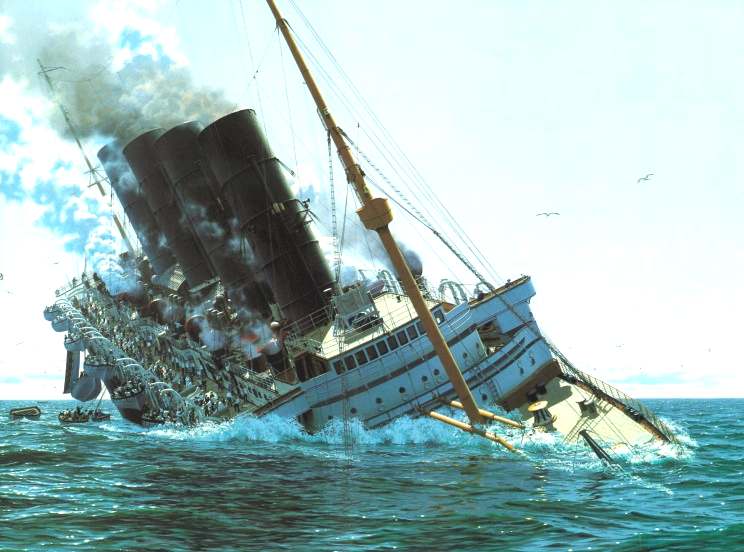
The
RMS Lusitania was a British ocean liner, holder of the Blue Riband and
for a short time the world's biggest ship. She was launched by the the Cunard Line in 1907, at a time of fierce competition for the North Atlantic
trade with others such as the White Star Line, famous for the Titanic. In 1915 she was
torpedoed and sunk by a German U-boat, with heavy loss of life.
As German shipping lines tended to monopolise the lucrative passage of continental emigrants, Cunard responded by trying to outdo them for speed, capacity and luxury. The Lusitania and her running mate Mauritania were fitted with revolutionary new
steam turbine engines, able to maintain a speed of 25 knots. Equipped with lifts, wireless telegraph and electric
lights, they provided 50% more passenger space than any other ship, and the first class decks were noted for their sumptuous furnishings. The ship's name was taken from Lusitania, an ancient Roman province on the west of Iberian Peninsula the region that now is Southern Portugal and Extremadura.
On the outbreak of the First World War in 1914, she was commandeered by the Admiralty as an armed merchant cruiser, but proved unsuitable in this role, and was allowed to resume passenger services on condition that she carried government cargoes. When she left New York for Liverpool on what would be her final voyage on 1 May 1915, submarine warfare was intensifying in the Atlantic. Germany had declared the seas around the United Kingdom to be a war-zone, and the
German embassy in America had placed a newspaper advertisement warning people not to sail in the Lusitania. On the afternoon of May 7, the Lusitania was torpedoed by a German U-Boat, 11 miles off the southern coast of Ireland and inside the declared “zone of war”. A second internal explosion sent her to the bottom in 18 minutes, claiming the lives of 1198 people.
In firing on a non-military ship without warning, the Germans had breached the international laws known as the Cruiser Rules. Although the Germans had a list of reasons for treating the Lusitania as a naval vessel, including that the ship was carrying war munitions and that the British had also been breaching the Cruiser Rules, the sinking caused a storm of protest in the United States. It also influenced the decision by the U.S. to declare war two years later, in 1917.
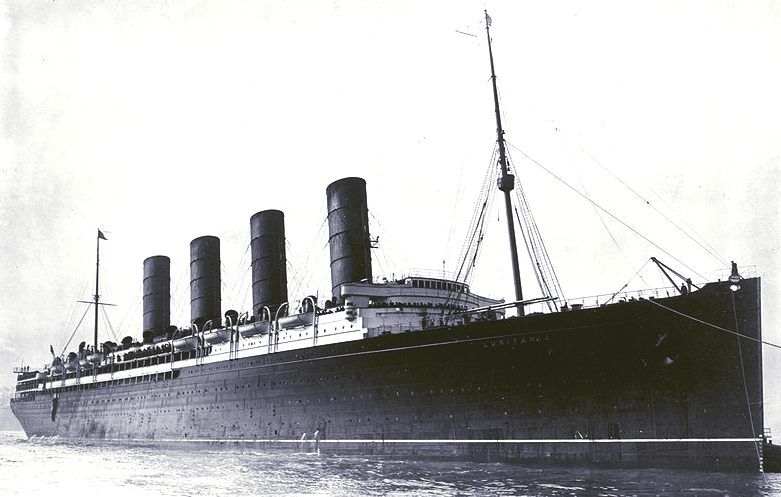
A
magnificent giant of a ship
DESIGN
Cunard established a committee to decide upon the design for the new ships, of which James Bain, Cunard's Marine Superintendent was the chairman. Other members included Rear Admiral H. J. Oram, who had been involved in designs for turbine powered ships for the navy, and Charles Parsons, whose company Parsons Marine was now producing revolutionary turbine engines. Parsons maintained that he could design engines capable of maintaining a speed of 25 knots, which would require 68,000 horse power. The largest turbine sets built thus far had been of 23,000 bhp for the Dreadnought class battleships, and 41,000 bhp for Invincible class battlecruisers, which meant the engines would be of a new, untested design. Turbines offered the advantages of generating less vibration and greater reliability in operation at high speeds, combined with lower fuel consumption. It was agreed that a trial would be made by fitting turbines to Carmania, which was already under construction. The result was a ship 1.5 knots faster than her conventionally powered sister Caronia with the expected improvements in passenger comfort and operating economy.
The ship was designed by Leonard Peskett and built by John Brown and Company of Clydebank, Scotland. Peskett had built a large model of the proposed ship in 1902 showing a three funnel design. A fourth funnel was implemented into the design in 1904 as it was necessary to vent the exhaust from additional boilers fitted after steam turbines had been settled on as the powerplant. The original plan called for three propellers, but this was altered to four because it was felt the necessary power could not be transmitted through just three. Four turbines would drive four separate
propellers, with additional reversing turbines to drive the two inboard shafts only. To improve efficiency, the two inboard propellers rotated inwards, while those outboard rotated outwards. The outboard turbines operated at high pressure; the exhaust steam then passing to those inboard at relatively low pressure. The propellers were driven directly by the turbines, since sufficiently robust gearboxes had not yet been developed, and only became available in 1916. Instead, the turbines had to be designed to run at a much lower speed than those normally accepted as being optimum. Thus, the efficiency of the turbines installed was less at low speeds than a conventional reciprocating steam engine, but significantly better when the engines were run at high speed, as was usually the case for an express liner. The ship was fitted with 23 double ended, and two single ended boilers (which fitted the forward space where the ship narrowed), operating at a maximum 195 psi and containing no fewer than 192 individual furnaces.
Work to refine the hull shape was conducted in the Admiralty experimental tank at Haslar, Gosport. As a result of experiments, the beam of the ship was increased by 10 feet (3.0 m) over that initially intended to improve stability. The hull immediately in front of the rudder and the balanced rudder itself, followed naval design practice to improve the vessel's turning response. The Admiralty contract required that all machinery be below the waterline, where it was considered to be better protected from gunfire, and the aft third of the ship below water was used to house the turbines, the steering motors and four 375 kW steam driven turbo-generators. The central half contained four boiler rooms, with the remaining space at the forward end of the ship being reserved for cargo and other storage. Coal bunkers were placed along the length of the ship outboard of the boiler rooms, with a large transverse bunker immediately in front of that most forward (number 1) boiler room. Apart from convenience ready for use, the coal was considered to provide added protection for the central spaces against attack. At the very front were the chain lockers for the huge anchor chains and ballast tanks to adjust the ship's trim. The hull space was divided into twelve watertight compartments, any two of which could be flooded without risk of the ship sinking, connected by 35 hydraulically operated watertight doors. A critical flaw in the arrangement of the watertight compartments, was that sliding doors to the coal bunkers needed to be open to provide a constant feed of coal whilst the ship was operating, and closing these in emergency conditions could be problematic. The ship had a double bottom, with the space between divided into separate watertight cells. The ship's exceptional height was due to the six decks of passenger accommodation above the waterline, compared to the customary four decks in existing liners.
High tensile steel was used for the ship's plating, as opposed to the more conventional mild steel. This allowed a reduction in plate thickness, reducing weight but still providing 26% greater strength than otherwise. Plates were held together by triple rows of rivets. The ship was heated and cooled throughout by a thermo-tank ventilation system, which used steam driven heat exchangers to warm air to a steady 65 °F (18.3 °C), while steam was injected into the airflow to maintain steady humidity. Forty-nine separate units driven by electric fans provided seven complete changes of air per hour throughout the ship, through an interconnected system, so that individual units could be switched off for maintenance. A separate system of exhaust fans removed air from galleys and bathrooms. As built, the ship conformed fully with Board of Trade safety regulations, which required sixteen
lifeboats, with a capacity of approximately 1000 people.
At the time of her completion Lusitania was briefly the largest ship ever built, but was eclipsed in this respect by the slightly larger Mauretania, which entered service shortly thereafter. She was 70 feet (21 m) longer, a full two knots faster, and had a capacity of 10,000 gross tons over and above that of the most modern German liner, Kronprinzessin Cecilie. Passenger accommodation was 50% larger than any of her competitors, providing for 552 saloon class, 460 cabin class and 1,186 in third class. Her crew comprised 69 on deck, 369 operating engines and boilers and 389 to attend to passengers. Both she and Mauretania had electric lifts, sumptuous interiors and an early form of air-conditioning.
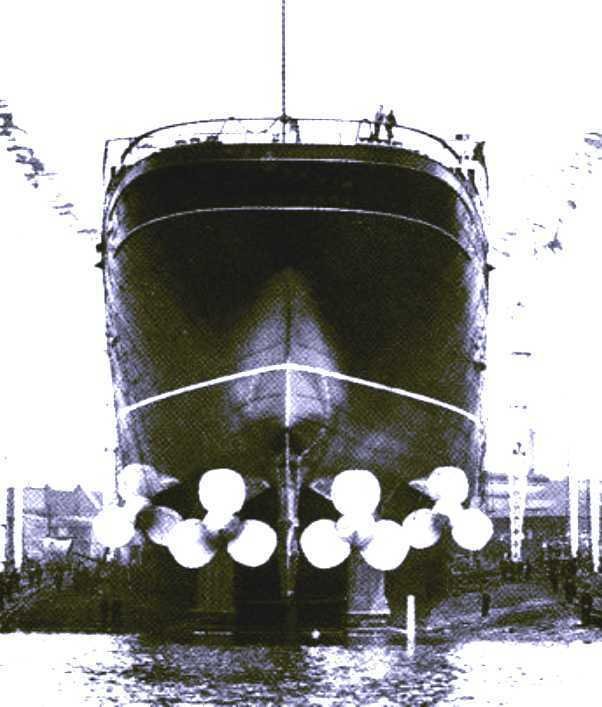
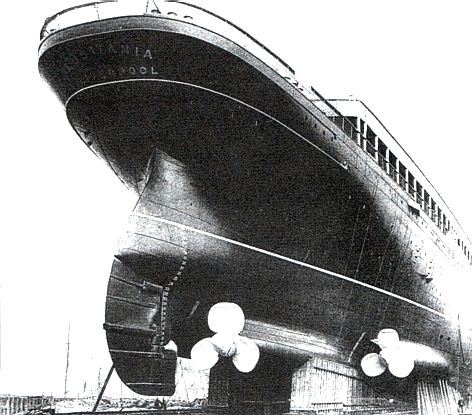
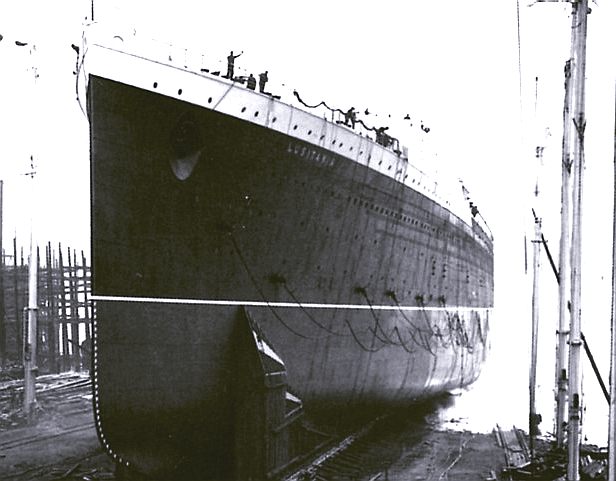
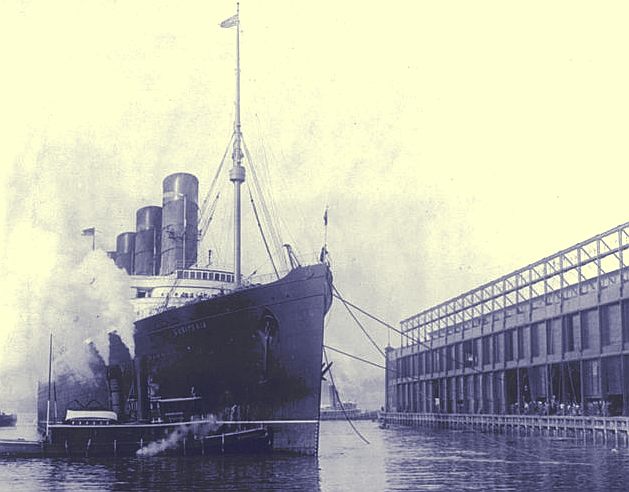
A
selection of Lusitania pictures from the 1906 launch to 1908 Blue Riband
fame and New York
SAFETY
EQUIPMENT
As
with the Titanic, the Lusitania did not carry enough lifeboats for all the passengers, officers and crew on board at the time of her maiden voyage (actually carrying four lifeboats fewer than the Titanic would carry in 1912). Though this was a common practice for large passenger ships, believing that in busy shipping lanes help would always be nearby and the few boats available would be adequate to ferry all aboard to rescue ships. Interestingly after the Titanic sank, the Lusitania and Mauretania would only be equipped with an additional six more wooden boats under davits, making for a total of 22 boats rigged in davits. The rest of their lifeboat accommodations were supplemented with an innumerable amount of collapsible lifeboats and life-rafts which needed assembly in the event they had to be used. This contrasted with the Olympic and the Britannic which received a full complement of lifeboats all rigged under davits. This difference would prove key in the Lusitania sinking in that there was simply no time to assemble collapsible boats or life-rafts. When Britannic, working as a hospital ship during World War I, sunk in 1916 after hitting a mine in the Aegean sea the already davited boats were swiftly lowered saving nearly all on board.
CONSTRUCTION
Lusitania and Mauretania were commissioned by Cunard, responding to increasing competition from rival transatlantic passenger companies, particularly the German Norddeutscher Lloyd (NDL) and Hamburg America Line (HAPAG). They had larger, faster, modern, more luxurious ships than Cunard and were better placed, starting from German ports, to capture the lucrative trade in emigrants leaving Europe for America. In 1897 the NDL liner Kaiser Wilhelm der Grosse captured the Blue Riband from Cunard's Campania, before the prize was taken in 1900 by the HAPAG ship Deutschland. NDL soon wrested the prize back in 1903 with the new Kaiser Wilhelm II and Kronprinz Wilhelm. Cunard saw their business steadily
declining as a result of the so-called Kaiser class ocean liners.
The American millionaire businessman J. P. Morgan had decided to invest in transatlantic shipping by creating a new company International Mercantile Marine (IMM), and in 1901 purchased the British freight shipper Frederick Leyland & Co. and a controlling interest in the British passenger White Star Line and folded them into IMM. In 1902, IMM, NDL, and HAPAG entered into a "Community of Interest" to fix prices and divide between them the transatlantic trade. The partners also acquired a 51% stake in the Dutch Holland America Line. IMM made offers to purchase Cunard which, along with the French CGT, were now their principal rivals. Cunard declined the offer, but lacked the financial resources to respond with new ships. Cunard chairman Lord Inverclyde thus approached the British government for assistance. Faced with the impending collapse of the British liner fleet and the consequent loss of national prestige, as well as the reserve of shipping for war purposes which it represented, they agreed to help. By an agreement signed in June 1903, Cunard was given a loan of £2.6 million to finance two ships, repayable over 20 years at a favourable interest rate of 2.75%. The ships would receive an annual operating subsidy of £75,000 each plus a mail contract worth £68,000. In return the ships would be built to Admiralty specifications so that they could be used as auxiliary cruisers in wartime.
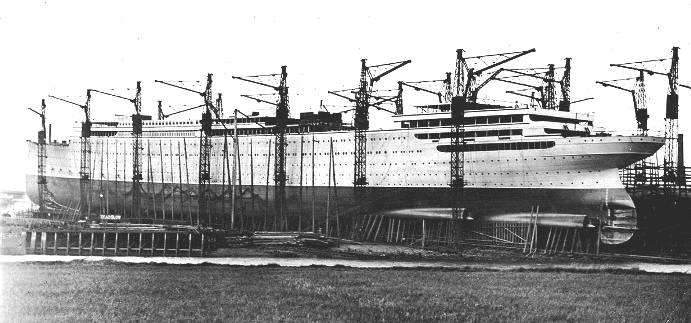
RMS
Aquitania, sister ship to the Lusitania, under construction on the Clyde
MAIDEN
VOYAGE & THE BLUE RIBAND
Commanded by Commodore James Watt,
the Lusitania was moored at the Liverpool landing stage for her maiden voyage at 4:30 p.m. on Saturday 7 September 1907 as the onetime
Blue Riband holder RMS Lucania vacated the pier. At the time Lusitania was the largest ocean liner in service and would continue to be until the introduction of Mauretania in November that year. During her eight-year service, she made a total of 202 crossings on the Cunard Line's Liverpool-New York Route.
A crowd of 200,000 people gathered to see her departure at 9:00 p.m. for Queenstown, where she was to take on more passengers. She anchored again at Roches Point, off Queenstown, at 9:20 a.m. the following morning, where she was shortly joined by Lucania, which she had passed in the night, and 120 passengers were brought out to the ship by tender bringing her total of passengers to 2,320. At 12:10 p.m. on Sunday Lusitania was again under way and passing the Daunt Rock Lightship. In the first 24 hours she achieved 561 miles (903 km), with further daily totals of 575, 570, 593 and 493 miles (793 km) before arriving at Sandy Hook at 9:05 a.m. Friday 13 September, taking in total 5 days and 54 minutes, 30 minutes outside the record time held by Kaiser Wilhelm II of the North German Lloyd line. Fog had delayed the ship on two days, and her engines were not yet run in. In New York hundreds of thousands of people gathered on the bank of the River Hudson from Battery Park to pier 56. All New York's police had been called out to control the crowd. 100 horse drawn cabs had been queuing from the start of the day ready to take away passengers. During the week's stay the ship was made available for guided tours. At 3 p.m. on Saturday 21 September, the ship departed on the return journey, arriving Queenstown 4 a.m. 27 September and Liverpool 12 hours later. The return journey was 5 days 4 hours and 19 minutes, again delayed by fog.
On her second voyage in better weather, Lusitania arrived at Sandy Hook on 11 October 1907 in the Blue Riband record time of 4 days, 19 hours and 53 minutes. She had to wait for the tide to enter harbour where news had proceeded her and she was met by a fleet of small craft, whistles blaring. Lusitania averaged 23.99 knots (44.43 km/h) westbound and 23.61 knots (43.73 km/h) eastbound. In December 1907, Mauretania entered service and took the record for the fastest eastbound crossing. Lusitania made her fastest westbound crossing in 1909 after her propellers were changed, averaging 25.85 knots (47.87 km/h). She briefly recovered the record in July of that year, but Mauretania recaptured the Blue Riband the same month, retaining it until 1929, when it was taken by SS Bremen.
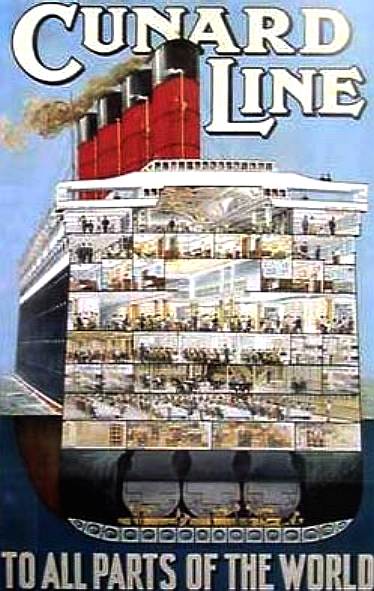
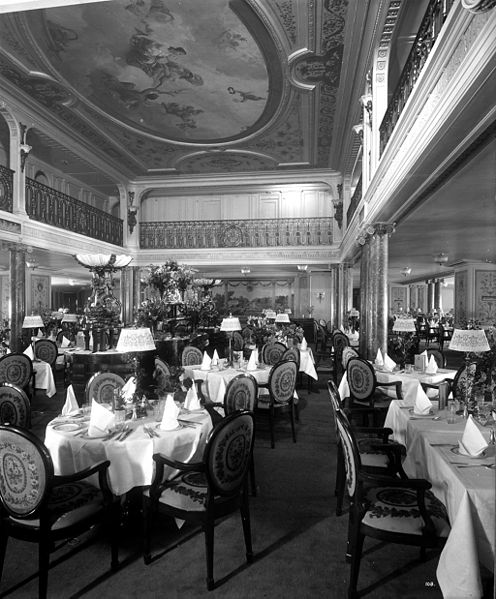
The
3 sisters were superbly fitted out - Cunard poster (left) 1st class dining
room (right).
WORLD
WAR I 1914
When Lusitania was built, her construction and operating expenses were subsidised by the British government, with the proviso that she could be converted to an Armed Merchant Cruiser if need be. A secret compartment was designed in for the purpose of carrying arms and
ammunition. When war was declared the Lusitania was requisitioned by the British Admiralty as an armed merchant cruiser, and she was put on the official list of AMCs. Lusitania remained on the official AMC list and was listed as an auxiliary cruiser in the 1914 edition of Jane's All the World's Fighting Ships, along with Mauretania.
The Declaration of Paris codified the rules for naval engagements involving civilian vessels. The so-called Cruiser Rules required that the crew and passengers of civilian ships must be safeguarded in the event that the ship is to be confiscated or sunk. These rules also placed some onus on the ship itself, in that the merchant ship had to be flying its own flag, and not pretending to be of a different nationality. Also, it had to stop when confronted and allow itself to be boarded and searched, and it was not allowed to be armed or to take any hostile or evasive actions. However when war was declared, British merchant ships were given orders to ram submarines that surfaced to implement warnings as per the Cruiser Rules.
At the outbreak of hostilities, fears for the safety of Lusitania and other great liners ran high. During the ship’s first east-bound crossing after the war started, she was painted in a drab grey colour scheme in an attempt to mask her identity and make her more difficult to detect visually. When it turned out that the German Navy was kept in check by the Royal Navy, and their commerce threat almost entirely evaporated, it very soon seemed that the Atlantic was safe for ships like Lusitania, if the bookings justified the expense of keeping them in service.
Many of the large liners were laid up over the autumn and winter of 1914–1915, in part due to falling demand for passenger travel across the Atlantic, and in part to protect them from damage due to mines or other dangers. Among the most recognizable of these liners, some were eventually used as troop transports, while others became hospital ships. Lusitania remained in commercial service; although bookings aboard her were by no means strong during that autumn and winter, demand was strong enough to keep her in civilian service. Economizing measures were taken, however. One of these was the shutting down of her No. 4 boiler room to conserve coal and crew costs; this reduced her maximum speed from over 25 knots (46 km/h) to 21 knots (39 km/h). Even so, she was the fastest first-class passenger liner left in commercial service.
With apparent dangers evaporating, the ship’s disguised paint scheme was also dropped and she was returned to civilian colours. Her name was picked out in gilt, her funnels were repainted in their traditional Cunard livery, and her superstructure was painted white again. One alteration was the addition of a bronze/gold coloured band around the base of the superstructure just above the black paint.
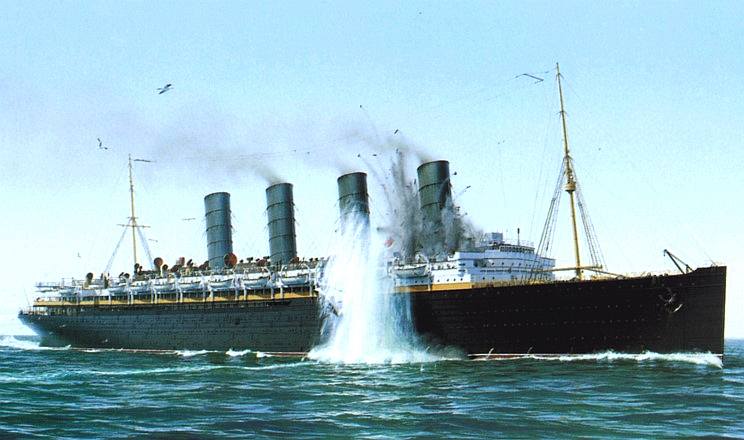
U20's
torpedo strikes home, a devastating direct hit - thought to be by a single
firing
SUBMARINES
1915
By early 1915 a new threat began to materialize: submarines. At first they were used by the Germans only to attack naval vessels, and they achieved only occasional – but sometimes spectacular – successes. Then the U-boats began to attack merchant vessels at times, although almost always in accordance with the old Cruiser Rules. Desperate to gain an advantage on the Atlantic, the German government decided to step up their submarine campaign, as a result of the British declaring the North Sea a War zone in November 1914. On 4 February 1915, Germany declared the seas around the British Isles a war zone: from 18 February allied ships in the area would be sunk without warning. This was not wholly unrestricted submarine warfare since efforts would be taken to avoid sinking neutral ships.
Lusitania was scheduled to arrive in Liverpool on 6 March 1915. The Admiralty issued her specific instructions on how to avoid submarines. Despite a severe shortage of destroyers, Admiral Henry Oliver ordered HMS Louis and Laverock to escort Lusitania, and took the further precaution of sending the Q ship Lyons to patrol Liverpool Bay. The destroyer commander attempted to discover the whereabouts of Lusitania by telephoning Cunard, who refused to give out any information and referred him to the Admiralty. At sea, the ships contacted Lusitania by radio, but did not have the codes used to communicate with merchant ships. Captain Dow of Lusitania refused to give his own position except in code, and since he was, in any case, some distance from the positions they gave, continued to Liverpool unescorted.
It seems that, in response to this new submarine threat, some alterations were made to Lusitania and her operation. She was ordered not to fly any flags in the War Zone, which was a contravention of the Cruiser Rules. Some messages were sent to the ship’s commander in order to help him decide how to best protect his ship against the new threat, and it also seems that her funnels were most likely painted a dark grey to help make her less visible to enemy submarines. Clearly, there was no hope of disguising her actual identity, since her profile was so well known, and no attempt was made to paint out the ship’s name at the prow.
Captain Dow, apparently suffering from stress from operating his ship in the War Zone, and after a significant “false flag” controversy, left the ship; Cunard later explained that he was "tired and really ill." He was replaced by Captain William Thomas Turner, who had previously commanded Lusitania, Mauretania, and Aquitania in the years before the war.
On 17 April 1915, Lusitania left Liverpool on her 201st transatlantic voyage, arriving in New York on 24 April. A group of German–Americans, hoping to avoid controversy if Lusitania were attacked by a U-boat, discussed their concerns with a representative of the German Embassy. The embassy decided to warn passengers before her next crossing not to sail aboard Lusitania. The Imperial German Embassy placed a warning advertisement in 50 American newspapers, including those in New York.
NOTICE!
Travelers intending to embark on the Atlantic voyage are reminded that a state of war exists between Germany and her allies and Great Britain and her allies; that the zone of war includes the waters adjacent to the British Isles; that, in accordance with formal notice given by the Imperial German Government, vessels flying the flag of Great Britain, or any of her allies, are liable to destruction in those waters and that
travelers sailing in the war zone on the ships of Great Britain or her allies do so at their own risk.
Imperial German Embassy
Washington, D.C., April 22, 1915.
This warning was printed adjacent to an advertisement for Lusitania's return voyage. The warning led to some agitation in the press and worried the ship's passengers and crew. Lusitania departed Pier 54 in New York on 1 May 1915.
The warning could not be more clear; the Lusitania was a target.
SINKING
On 7 May Lusitania was nearing the end of her crossing, as she was scheduled to dock at the Prince's Landing Stage in Liverpool later that afternoon. She was running parallel to the south coast of Ireland, and was roughly 11 miles off the Old Head of Kinsale when the liner crossed in front of U-20 at 2:10 p.m. It was sheer chance that the liner became such a convenient target, since U-20 could hardly have caught the fast vessel otherwise.
Schwieger, the commanding officer of the U-boat, gave the order to fire one torpedo, which struck the Lusitania on the starboard bow, just beneath the wheelhouse. Moments later, a second explosion erupted from within the Lusitania's hull where the torpedo had struck, and the ship began to founder in a much more rapid procession, with a prominent list to starboard.
Almost immediately, the crew scrambled to launch the lifeboats. While the Lusitania carried more than enough lifeboats for all on board, the conditions of the sinking made their usage extremely difficult, and in some cases impossible due to the ship's severe list. In all, only six out of 48 lifeboats were launched successfully, with several more overturning, splintering to pieces and breaking apart. Eighteen minutes after the torpedo struck, the bow struck the seabed while the stern was still above the surface, and in a manner similar to the sinking of the Titanic three years earlier, the stern rose into the air and slid beneath the waves.
Of the 1,959 passengers and crew aboard the Lusitania at the time of the sinking, 1,195 lost their lives that afternoon in the waters of the Irish channel. Just as had been seen with the Titanic, most of the casualties were from drowning or from hypothermia. In the hours after the sinking, acts of heroism amongst both the survivors of the sinking and the Irish rescuers who had heard word of the Lusitania's distress signals brought the survivor count to 764. By the following morning, news of the disaster had spread around the world. While most of those lost in the sinking were either British or Canadians, the loss of 128 Americans in the disaster, including American writer and publisher Elbert Hubbard, outraged some in the United States.
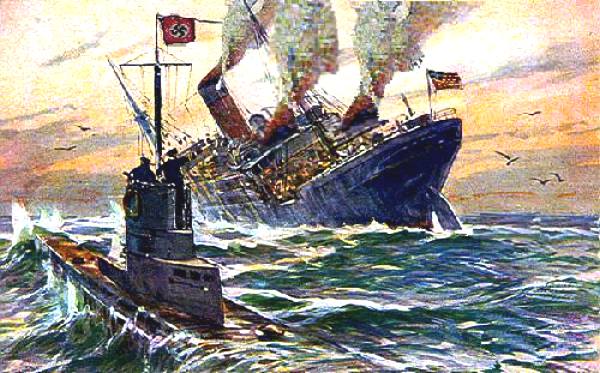
German
U boat U20 surfaces after firing the torpedo that sunk the Lusitania
INTERNATIONAL
CONDEMNATION
The sinking caused an international outcry, especially in Britain and across the British Empire, as well as in America, where 128 of 139 US citizens aboard the ship lost their lives.
On 8 May Dr Bernhard Dernburg, a German spokesman and a former German Colonial Secretary, published a statement in which he said that because Lusitania "carried contraband of war" and also because she "was classed as an auxiliary cruiser" Germany had had a right to destroy her regardless of any passengers aboard. Dernburg further said that the warnings given by the German Embassy before her sailing plus the 18 February note declaring the existence of "war zones" relieved Germany of any responsibility for the deaths of the American citizens aboard. He referred to the ammunition and military goods declared on Lusitania's manifest and said that "vessels of that kind" could be seized and destroyed under the Hague rules. Luisitania was indeed officially listed as an auxiliary war ship, and her cargo had included an estimated 4,200,000 rounds of rifle cartridges, 1,250 empty shell cases, and 18 cases of non-explosive fuses, which was openly listed as such in her cargo manifest. The day after the sinking, the New York Times published full details of the ship's military cargo. Assistant Manager of the Cunard Line, Herman Winter, denied the charge that she carried munitions, but admitted that she was carrying small-arms ammunition, and that she had been carrying such ammunition for years. The fact that Lusitania had been carrying shells and cartridges was not made known to the British public at the time. In the 27 page additional manifest, delivered to US customs 4-5 days after the Lusitania sailed from New York, and the Bethlehem Steels papers is stated that the "empty shells" were in fact 1248 boxes of filled 3" shell, 4 shells to the box, totalling 103.00 pounds or 50 tonnes.
The British felt that the Americans had to declare war on Germany. However, US President Woodrow Wilson refused to overreact. During the weeks after the sinking, the issue was hotly debated within the US government, and correspondence was exchanged between the US and German governments. German Foreign Minister Von Jagow continued to argue that the Lusitania was a legitimate military target, because she was listed as an armed merchant cruiser, she was using neutral flags and she had been ordered to ram submarines – in blatant contravention of the Cruiser Rules. He further argued that Lusitania had on previous voyages carried munitions and Allied troops. Wilson continued to insist that the German government must
apologize for the sinking, compensate US victims, and promise to avoid any similar occurrence in the future. The British were upset at Wilson's actions – not realizing that it reflected general US opinion at the time. Secretary of State William Jennings Bryan advised President Wilson that:
“ships carrying contraband should be prohibited from carrying passengers … [I]t would be like putting women and children in front of an army.”
Bryan later resigned because he felt the Wilson administration was being biased in ignoring British contraventions of international law, and that Wilson was leading the USA into the war.
A German decision on 9 September 1915 stated that attacks were only allowed on ships that were definitely British, while neutral ships were to be treated under the Prize Law rules, and no attacks on passenger liners were to be permitted at all.
It was in the interests of the British to keep US passions inflamed, and a fabricated story was circulated that in some regions of Germany, schoolchildren were given a holiday to celebrate the sinking of the Lusitania. This story was so effective that James W. Gerard, the US ambassador to Germany, recounted it in his memoir of his time in Germany, Face to Face with Kaiserism (1918), though without substantiating its validity.
Almost two years later, in January 1917 the German Government announced it would again conduct full unrestricted submarine warfare. This together with the Zimmermann Telegram pushed US public opinion over the tipping point, and on 6 April 1917 the United States Congress followed President Wilson's request to declare war on Germany.
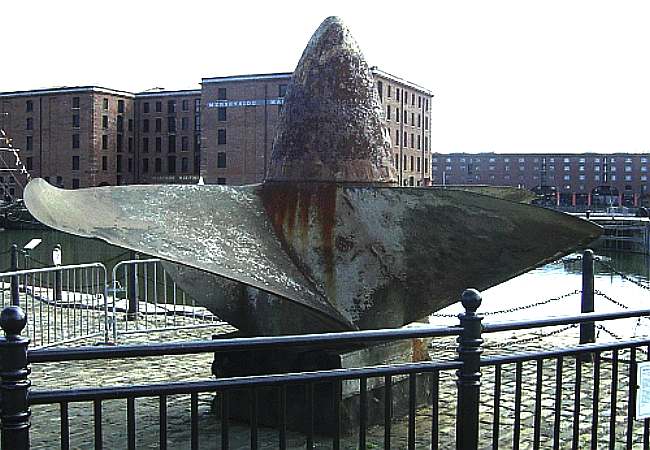
A
WALL OF SILENCE
There are a number of conspiracies relating to the last days of the Lusitania.
There has long been a theory, expressed by historian and former British naval intelligence officer Patrick Beesly and author Donald E. Schmidt among others, that the Lusitania was deliberately placed in danger by the British authorities, so as to entice a U-Boat attack and thereby drag the USA into the war on the side of Britain. A week before the sinking of the Lusitania, Winston Churchill wrote to Walter Runciman, the President of the Board of Trade, stating that it is "most important to attract neutral shipping to our shores, in the hope especially of embroiling the United States with Germany."
Beesly concludes: "unless and until fresh information comes to light, I am reluctantly driven to the conclusion that there was a conspiracy deliberately to put the Lusitania at risk in the hope that even an abortive attack on her would bring the United States into the war. Such a conspiracy could not have been put into effect without Winston Churchill's express permission and approval."
At the post-sinking inquiry the Captain Turner refused to answer certain questions on the grounds of war-time secrecy imperatives. The British government continues to keep secret certain documents relating to the final days of the voyage, including certain of the signals passed between the Admiralty and the Lusitania. The records which are available are often missing critical pages, and questions which continue to linger include the following:
1. The British authorities were aware that a German submarine was in the path of the Lusitania, but
failed
to divert the ship to a safer route.
2. They also failed to provide a destroyer escort, although destroyers were available in a nearby port.
3. The ship was ordered to reduce speed in the war zone, for reasons that have been kept secret ever
since.
4. How did such a big ship sink so quickly from a single torpedo strike?
WAR
MUNITIONS
Lusitania was officially carrying among her cargo rifle/machine-gun ammunition, shrapnel artillery shells without powder charges and artillery fuses. Beesly has stated that the cargo also included 46 tons of aluminium powder, which was used in the manufacture of explosives and which was being shipped to the Woolwich Arsenal. Author Steven Danver states that the Lusitania was also secretly carrying a large quantity of nitrocellulose (gun cotton), although this was not listed as such on the cargo manifest either.
Furthermore there was a large consignment of "fur", sent from Dupont Nemours, and some 90 tons butter and lard destined for the Royal Navy Weapons Testing Establishment in Essex. Although it was May this lard and butter was not refrigerated, it was insured by the special government rate, but the insurance was never claimed.
COVER
UP
Dublin-based technical diver Des Quigley, who dived on the wreck in the 1990s, has reported that the wreck is "like Swiss cheese" and the seabed around her "is littered with unexploded hedgehog mines".
In February 2009, the Discovery Channel TV series Treasure Quest aired an episode titled "Lusitania Revealed", in which Gregg Bemis and a team of shipwreck experts explore the wreck via a remote control unmanned submersible. At one point in the documentary an unexploded depth charge was found in the wreckage, in plain sight, clearly seen by the remote control submersible's video camera. Professor William Kingston of Trinity College, Dublin has said, "There's no doubt at all about it that the Royal Navy and the British government have taken very considerable steps over the years to try to prevent whatever can be found out about the Lusitania".
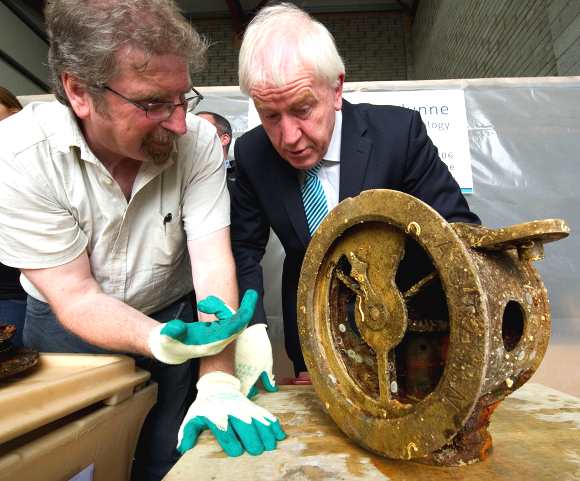
WRECKAGE
The wreck of the Lusitania lies on its starboard side at an approximately 30 degree angle in roughly 300 feet of water, 11 miles south of the lighthouse at Kinsale. The wreck is badly collapsed onto her starboard side, due to the force with which she struck the bottom coupled with the forces of winter tides and corrosion in the decades since the sinking. The keel has an "unusual curvature" which may be related to a lack of strength from the loss of its superstructure. The beam is reduced with the funnels missing presumably to deterioration. The bow is the most prominent portion of the wreck with the stern damaged by depth charges. Three of the four propellers were removed by Oceaneering International in 1982.
Expeditions to the Lusitania have shown that the ship has deteriorated much faster than the Titanic has, being in a depth of 305 feet (93 metres) of water. When contrasted with her
contemporary, Titanic (resting at a depth of 12,000 feet (3657 metres)), Lusitania appears in a much more deteriorated state due to the presence of fishing nets lying on the wreckage, the blasting of the wreck with depth charges and multiple salvage operations. As a result, it may be only a matter of years before the Lusitania completely collapses in on herself.
SIMON LAKE SALVAGE ATTEMPT 1930
Between 1931 and 1935 an American syndicate comprising Simon Lake, one of the chief inventors of the modern submarine, and a US Navy officer, Captain H.H. Railey, negotiated a contract with the British Admiralty and other British authorities to partially salvage the Lusitania. The means of salvage was unique in that a 200-foot (61 m) steel tube, five feet in diameter, which enclosed stairs, and a dive chamber at the bottom would be floated out over the Lusitania wreck and then sunk upright, with the dive chamber resting on the main deck of the Lusitania. Divers would then take the stairs down to the dive chamber and then go out of the chamber to the deck of the Lusitania. Lake's primary business goals were to salvage the purser's safe and any items of historical value. It was not to be though, and in Simon Lake's own words, "... but my hands were too full"—i.e. Lake's company was having financial difficulties at the time—and the contract with British authorities expired 31 December 1935 without any salvage work being done, even though his unique salvage tunnel had been built and tested.
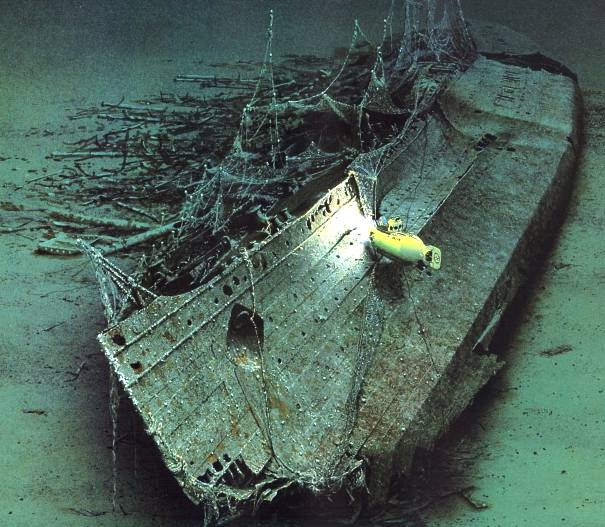
RECENT DEVELOPMENTS
In 1967 the wreck of the Lusitania was sold by the Liverpool & London War Risks Insurance Association to former US Navy diver John Light for £1,000. Gregg Bemis became a co-owner of the wreck in 1968, and by 1982 had bought out his partners to become sole owner. He subsequently went to court in England in 1986, the US in 1995, and Ireland in 1996 to ensure that his ownership was legally in force.
None of the jurisdictions involved objected to his ownership of the vessel but in 1995 the Irish Government declared it a heritage site under the National Monuments Act, which prohibited him from in any way interfering with it or its contents. After a protracted legal wrangle, the Supreme Court in Dublin overturned the Arts and Heritage Ministry's previous refusal to issue Bemis with a five year exploration license in 2007, ruling that the then minister for Arts and Heritage had misconstrued the law when he refused Bemis's 2001 application. Bemis planned to dive and recover and analyse whatever artifacts and evidence could help piece together the story of what happened to the ship. He said that any items found would be given to museums following analysis. Any fine art recovered, such as the paintings by Rubens, Rembrandt and Monet among other artists believed to have been in the possession of Sir Hugh Lane, who was believed to be carrying them in lead tubes, would remain in the ownership of the Irish Government.
In late July 2008 Gregg Bemis was granted an "imaging" licence by the Department of the Environment, which allowed him to photograph and film the entire wreck, and was to allow him to produce the first high-resolution pictures of it. Bemis planned to use the data gathered to assess how fast the wreck was deteriorating and to plan a strategy for a forensic examination of the ship, which he estimated would cost $5m. Florida-based
Odyssey Marine Exploration (OME) were contracted by Bemis to conduct the survey. The Department of the Environment's Underwater Archaeology Unit was to join the survey team to ensure that research would be carried out in a non-invasive manner, and a film crew from the Discovery Channel was also to be on hand.
A dive team from Cork Sub Aqua Club, diving under license, discovered 15,000 rounds of the .303 (7.7×56mmR) caliber rifle ammunition transported on the Lusitania in boxes in the bow section of the ship. The find was photographed but left in situ under the terms of the license. In December 2008, Gregg Bemis's dive team estimated a further four million rounds of .303 ammunition were on the ship at the time of its sinking. Mr. Bemis announced plans to commission further dives in 2009 for a full-scale forensic examination of the wreck.
The joint American-German production, The Sinking of the Lusitania: Terror at Sea premiered on the Discovery Channel on 13 May 2007, and on BBC One in the UK on 27 May 2007.
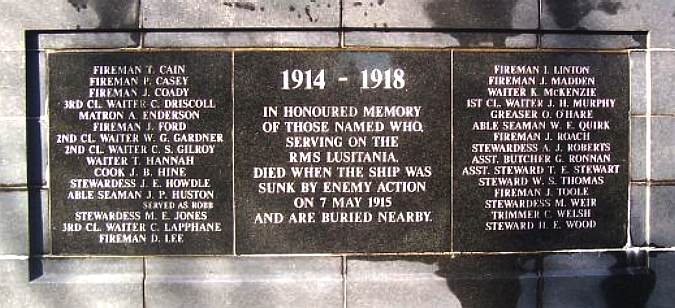
LEGAL ACTION 1984 CASE PRECEDENT
In 1982 various items were recovered from the wreck and brought ashore in the United Kingdom from the cargo of the Lusitania. Complex litigation ensued, with all parties settling their differences apart from the salvors and the British Government, who asserted "droits of admiralty" over the recovered items. The judge eventually ruled in The Lusitania,
"[1986] QB 384, [1986] 1 All ER 1011," that the Crown has no rights over wrecks outside British territorial waters, even if the recovered items are subsequently brought into the United Kingdom. The case remains the leading authority on this point of law today.
THE
FUTURE
Who
knows what might be discovered, if only the owners and those willing to investigate the
wreck site are allowed to do so. For the very latest news on survey, publications
and other related issues, see: http://www.lusitania.net
|
Lusitania
documentaries
- Youtube
|
SUBMARINE
INDEX
HMS
Astute 1st of Class
BAE Systems
HMS
Vanguard- Trident
INS
Sindhurakshak - explosion
& sinking
Lusitania
- Torpedo
attack
Predator
- Covert submarine hunter/killer
U
Boats -
U20
- Kapitan Leutnant Walther Schwieger
USS
Bluefish WWI submarine
USS
Bluefish - Nuclear submarine
USS
Flying Fish
USS
Nautilus - 1st nuclear submarine & subsea north pole passage
USS
Scorpion -
LINKS
http://www.lusitania.net/lastrestingplace.htm
http://www.history.navy.mil/wars/korea/minewar.htm
hhttp://en.wikipedia.org/wiki/HMHS_Britannic
hhttp://en.wikipedia.org/wiki/HMHS_Britannic
http://en.wikipedia.org/wiki/Admiralty_Mining_Establishment
http://en.wikipedia.org/wiki/Naval_mine
http://www.enterprise-europe-scotland.com/sct/news/?newsid=4306
|













